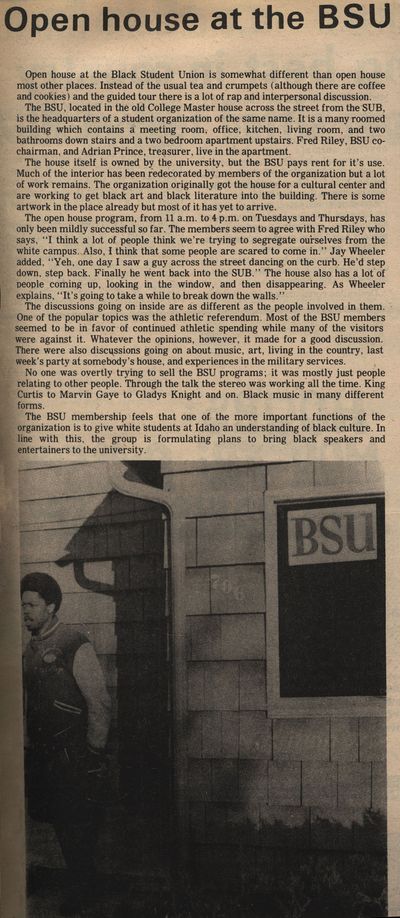University of Idaho’s Black Cultural Center makes comeback

MOSCOW, Idaho – Nearly 50 years after the College Master House was demolished – along with the Black Cultural Center, which was housed inside – the University of Idaho once again has a dedicated space for Black students on campus.
“We’re back,” said Yolanda Bisbee, chief diversity officer at UI, during an open house for the university’s new Black Cultural Center on Monday afternoon. “The Black African American Cultural Center is back. It’s been a slow process, but it has finally come to fruition.”
Two years ago, the Black Student Union applied for a permanent home as well as a director to help keep the union alive as members graduate. The new space is the first dedicated for use by the group since the 1970s
The College Master House, which held the Black Student Union’s Cultural Center after it first formed in 1971, was torn down when the building’s pipes burst in 1973. Instead of planning renovations, UI chose to demolish the house and others along Deakin Avenue, according to the university’s student newspaper the Argonaut.
The Black Student Union had used the building as a headquarters for meetings, activities and offices. At the time, two members of the organization lived upstairs.
After a freezing winter closed the cultural center indefinitely, the Black Student Union found a temporary home a few months later in the Canterbury House. The space took on the role of a gathering place for Black students. However, in 1975, the organization received a letter stating their new home would also be taken down, this time to expand the area known as People’s Park.
Ever since the loss of their original Black cultural space, the Black Student Union has struggled to find a unifying home on campus.
“Because white colleges and universities were not made with Black people in mind, UI was able to demolish our sovereign space without replacing it,” said Sydney Freeman Jr., a tenured professor in the College of Education, Health and Human Sciences at UI.
Freeman made history last year as the first African American man to be promoted to the rank of full professor at the state’s land-grant university.
He also played a crucial role in getting the new Black Cultural Center on campus, which is housed on the second floor of the Idaho Student Union Building in room 305. The area provides students with an avenue to build social connections and foster a sense of community.
Mario Pile, director of UI’s new Black Cultural Center, previously served as the project director for Veterans Upward Bound at Boise State University. At the open house, Pile said he’s extremely humbled to be a part of the center.
“Coming together in this way hopefully will make a difference on campus as students contemplate leaving but see that the space is a place to find refuge, peace and understanding,” he said. “The goal is to have students – Black students, especially – not leave before graduating.”
Today, Black students make up approximately 1% of the university’s student population.
Narcisse Mubibya, president of UI’s Black Student Union, says the organization gives Black students a sense of community and spreads an understanding of Black culture on a predominantly white campus.
The Black Student Union is currently celebrating more than 50 years of membership at the university.
“I want to thank everybody for all the work they’ve done to make this available for us as Black students here at the university,” Mubibya said. “Making everybody’s voice be heard is a big step. That’s something we deserve as Black students – being heard on our campus – because we belong here.”
Associated Students University of Idaho President Kallyn Mai said it’s incredible to see a space for Black students come back to campus.
“There’s a lot of different cultures, communities and lived experiences, so to have a place on campus where we know a specific subset of our community is going to feel welcome is incredible,” Mai said. “That’s what we work on every day.”